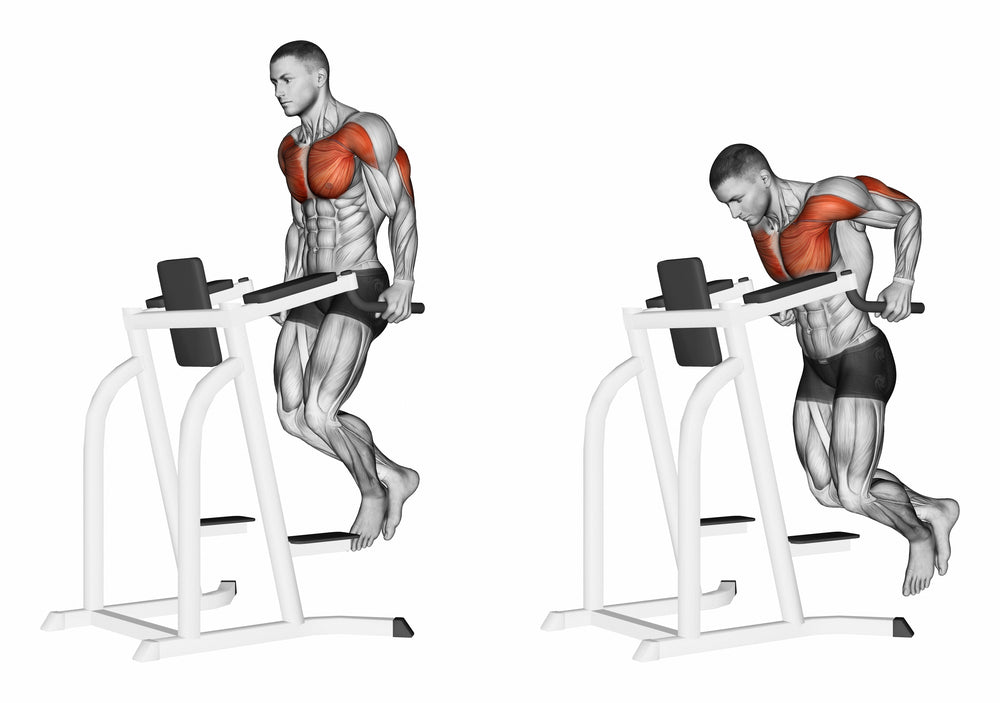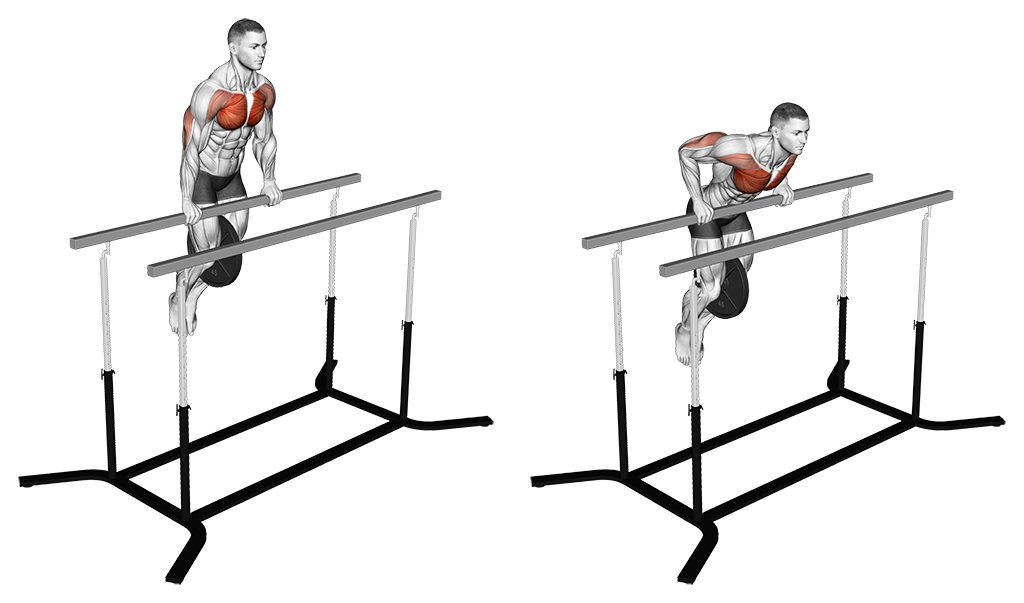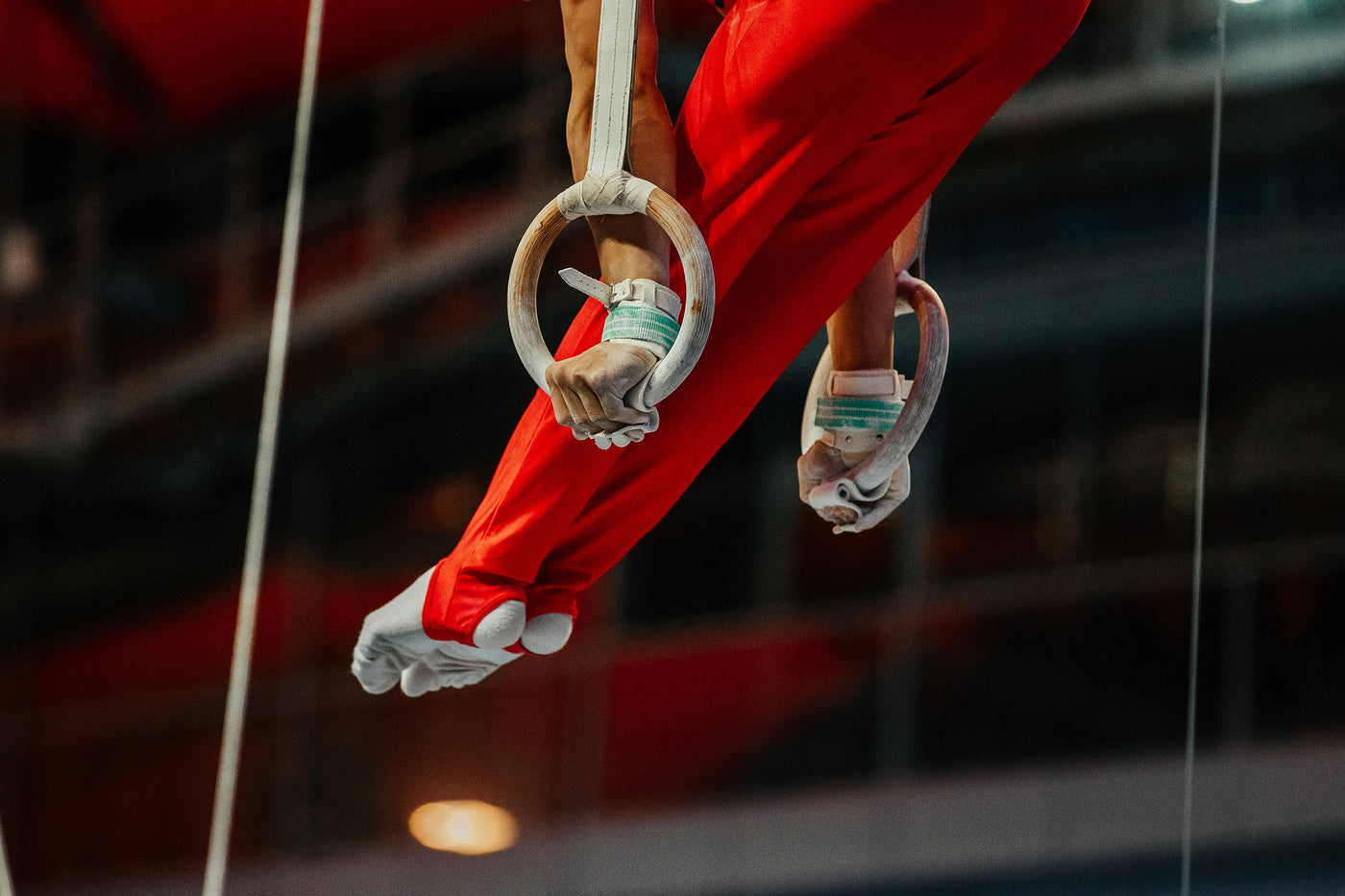Kinesiology of Exercise
EXERCISE NAME
The bar dip is one of the best exercises for the chest, back, shoulders, and triceps. Most dipping bars are similar to gymnastic parallel bars so that when you do the exercise you must use the neutral grip, with your palms facing your body.
If you want even greater development, you should use bars on which you can also use a pronated, supinated or 45 degree grip as well as different widths for the grip as for example on adjustable dip bars. This allows for even greater strength of the muscles involved as well as bringing other muscles into play.

Major Muscles and Actions Involved
Variant 1: Neutral grip
Flexion occurs in the shoulder joint, which involves the anterior deltoid, the pectoralis major (upper portion), and the coracobrachialis. In this action the upper arm moves from a position behind the trunk to a position alongside the body. In the shoulder girdle the muscles involved are the pectoralis minor and the rhomboid in downward rotation of the scapulae. In addition, the scapulae move downward in a straight line from the pull of the lower trapezius and pectoralis minor. Extension occurs in the elbow joint, in which the upper arms move up and away from the forearms as the elbows come closer to the body.

Major Muscles and Actions Involved
Variant 2: Pronated grip
In the shoulder joint the latissimus dorsi, teres major, and lower pectoralis major are involved in adduction. In this action the upper arms move in toward the sides of the body from an up and out to the side position. In the shoulder girdle and elbow joints, the muscles and actions are the same as in Variant 1.

Sports Uses
The muscles and actions involved in the dip are needed in many sports that require raising your body when your arms are shoulder level or slightly below. They are also used in all sports that require moving your arms up and forward from behind your body or down to your sides from an upward position. Many of these actions are used in gymnastics in the execution of stunts, in free exercise, and on the parallel bars, rings, and other apparatus.
Exercise Analysis
- If you want to develop greater shoulder flexibility, the exercise can be done with a different movement pattern in which you lower your body and stop in the bottom position and relax. In order to relax, exhale at the bottom while you are holding, and then when you are ready to push yourself back up, inhale and hold your breath as you push to the top position and then exhale.
- Although this version is more effective for the development of flexibility, it does make the exercise more difficult to perform. It is easier and more effective to lower your body at a moderate rate of speed and then quickly reverse as soon as you reach the bottom position; this allows for use of the muscle resiliency to assist you in the return.
- With a regular (neutral) grip and the bars shoulder-width apart, the triceps is heavily stressed. However, when your hands are more than shoulder-width apart, more emphasis is placed on your shoulder joint muscles (latissimus dorsi, pectoralis major, and teres major), regardless of grip.
- Very heavy weights are not recommended for proper execution of the bar dip. The value of this exercise lies in the strength developed in the full range of motion in the shoulder and elbow joints. When very heavy weights are used, you will find yourself decreasing the bottom range of motion.
- But the bottom range of motion is the most important part of this exercise, especially for athletes who need good shoulder joint flexibility and strength. Not only does the bottom range help to enhance various skills, but it also helps to prevent injuries which usually occur when the arm is placed in an extreme range of motion under great stress.
- When you find that doing bar dips through a full ROM is easy, you should hang weights from a belt on your waist for greater resistance. Make sure you still go through a full range of motion with the extra weights. Note that the Active Cords belt is ideally suited for hanging weights because of the four equally spaced D-rings on the belt.
Bar Dips vs Pushups
Bar dips and push-ups are both effective upper body exercises, but they differ in mechanics and muscle engagement. Bar dips primarily target the triceps, chest, and shoulders by requiring vertical pushing against body weight. This exercise demands more shoulder extension and engages the lower chest.
On the other hand, push-ups involve horizontal pushing, engaging the chest, shoulders, and triceps. They also recruit stabilizing muscles like the core. Push-ups are versatile and beginner-friendly, while bar dips may require more strength and control. Both exercises contribute to upper body strength and endurance, but they offer distinct variations in movement and muscle emphasis.

Want to Learn More?
Try our premium ebooks on the kinesiology of exercise. Satisfaction guaranteed.
